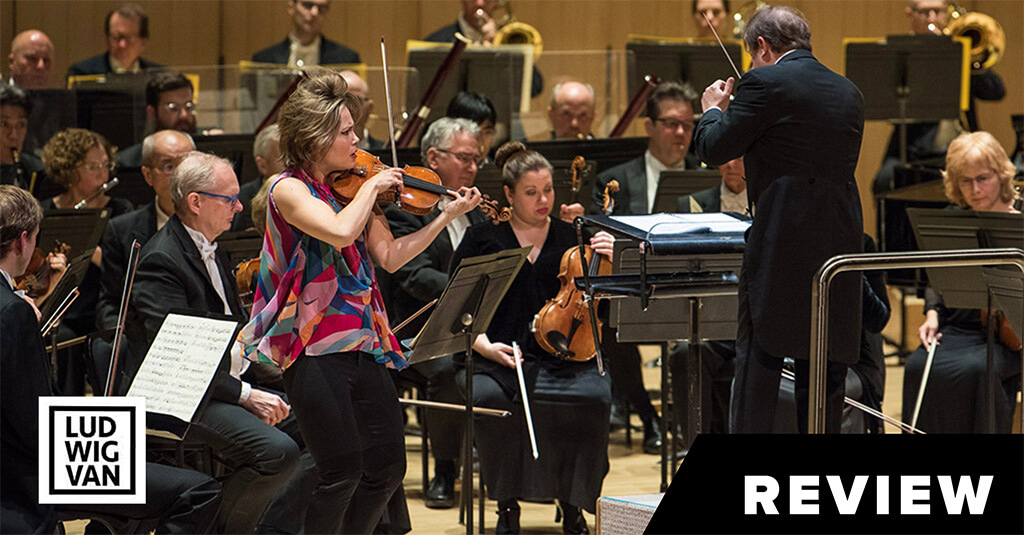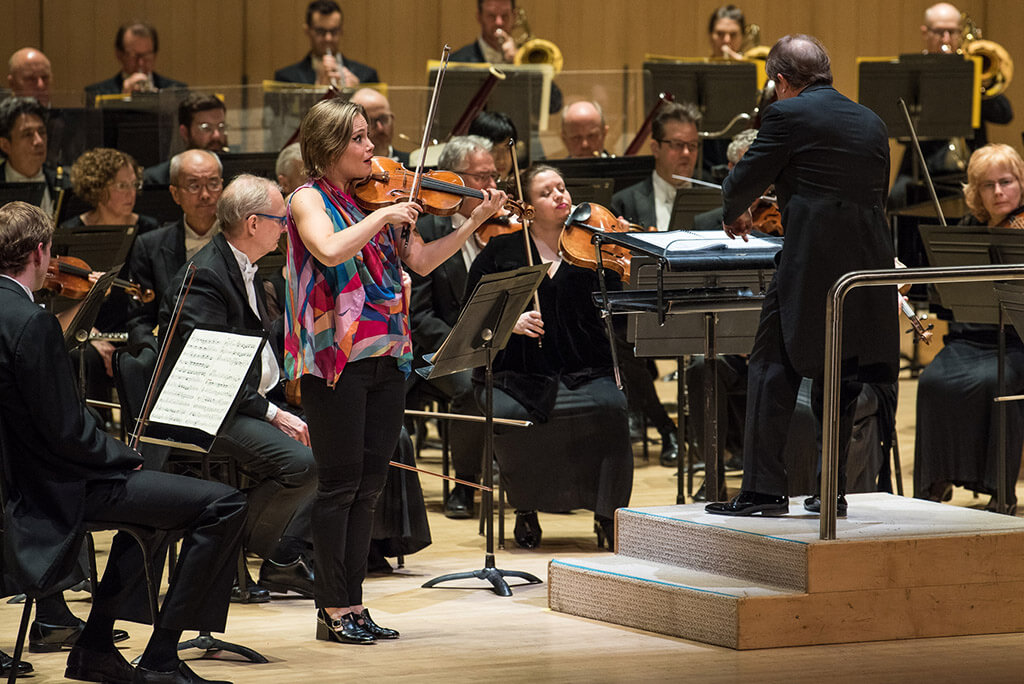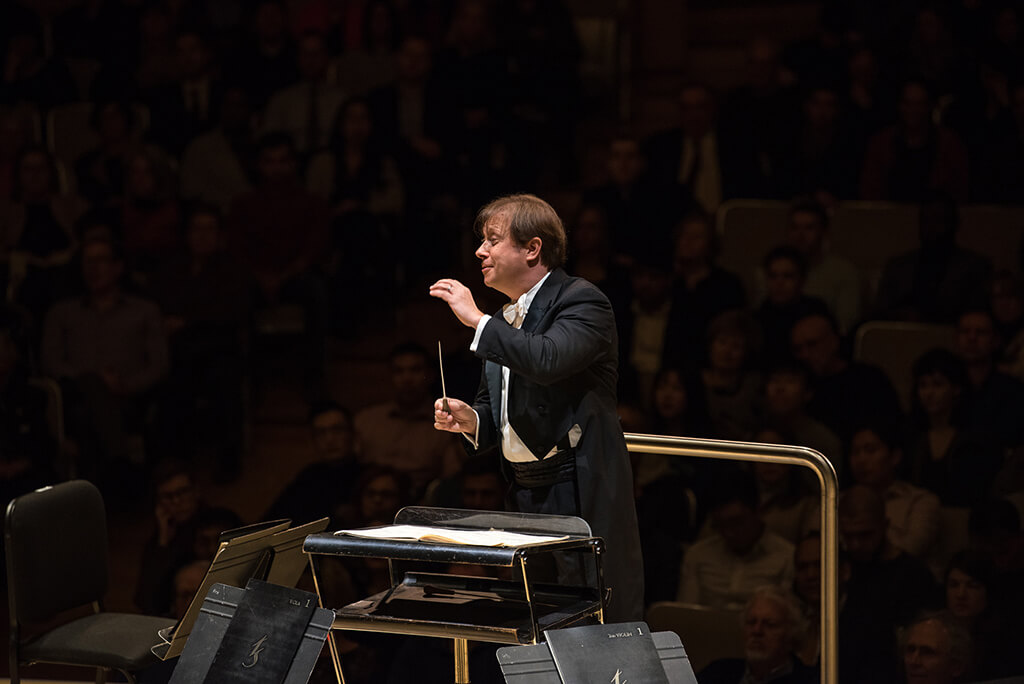
Toronto Symphony Orchestra with Ludovic Morlot (conductor), Leila Josefowicz (soloist). Thursday, January 10, 2019, at Roy Thomson Hall. Repeats Jan. 12 and Jan. 13 (George Weston Recital Hall). For tickets see www.tso.ca
The TSO inaugurated the 2019 portion of its Classical concert series Thursday night with a marquee performance of the Sibelius Second Symphony and Kurt Weill’s charming cabaret “Suite from The Threepenny Opera” (Kleine Dreigroschenmusik). It certainly took the chill off a cold, blowy January night.
It’s too bad the hall was only two-thirds sold, because a lot of people missed what turned out truly an amazing main event — a successful upstaging of everything by violinist Leila Josefowicz in a smashing performance of the Stravinsky Violin Concerto.
Why attendance wasn’t higher, I don’t know. Maybe it was the cold, or that it took place too early in the year. Perhaps the marketing division is working on it, or more to the point, perhaps the TSO needs an internet presence to show how damn good they are, as good as any other orchestra in North America, when it comes to interpreting twentieth-century repertoire.
Yes, the Sibelius Second Symphony was a rousing good time, and the audience was admirable in its support of its beloved TSO who turned in yet another hard-working, blue-collared effort. But, there were many elements that could have been better, such as Ludovic Morlot’s conducting, which required a more persuasive interpretive approach, and a hefty amount more balance to glue the orchestra together. Morlot filled in adequately well for David Robertson, who sadly for all of us, had to withdraw from conducting these performances.
Still, much didn’t get said that ought to have been more eloquently voiced in this Sibelius performance. I was particularly dismayed that the basses, who work their collective tails off night after night, weren’t conducted so they could be heard in the Allegro moderato Finale, right when they are needed most to stirring effect. Often heralded, rightly and/or wrongly as a nationalist independence work, the Second is first in many hearts as the premium exponent of the Finnish soul, a Symphony following on the heels of Finlandia, both of which were worked out to great detail and highest fervour.

But a lot of that nationalist fervour wasn’t there, and in its stead, the TSO was directed to offer merely serviceable albeit strong string playing which more often than not drowned out the winds. The brass was clear and rounded, but exposed and unnuanced. And the narrative flow lacked a certain essential continuity in all movements that could have told a more gripping story of a unique Finnish identity. It was like hearing those many North American performances from the previous century of Smetana’s Moldau that carried no Czech inflection.
Rather, it was Stravinsky’s violin concerto (1931) that stood out the most, capping off a great first half which included a slightly sanitized but smackingly good performance of the Weill Suite.
Stravinsky’s violin concerto stands less as a Romantic exemplar in the genre and more as a timbral or spectral challenge for the soloist to blend with the chamber orchestra. Both must master the work’s unusual sound colours, their intricate combinations requiring careful control within the acoustic. The work is also a kind of pitched battle between angular and lyrical lines.
Here, it was violinist Leila Josefowicz who took control with an unguarded choice for a predominantly lyrical and highly communicative performance, which suited both her technique and her intellectual approach to Stravinsky’s subtle masterpiece. Virtuosity, Stravinsky said, was not uppermost on his mind when he wrote the work (there isn’t even a cadenza). Instead, the display elements that we look for in a concerto are found elsewhere. Josefowicz found those moments in colour, dialogue, linear expression and even some overtly rhapsodic passages, especially in the third movement titled Aria II.
And where there was none of that to be found in the score, she made dynamic use of the work’s more naturally abundant angular features with quick lucid bow-work, like in the work’s Capriccio finale. The mixed interpretation, balanced but always beautiful, was a welcome departure from other performances of the work which try too hard for a steely-eyed objectivity, all in the name of a dictionary-defined, sterile neo-Classicism. Honestly, the era of playing like that is over now. Josefowicz is the violinist of the future who can blend Stravinsky’s multiple compositional characteristics into a compelling story, and she makes you eagerly want to find out what she’s going to make happen next.

And the TSO were virtually perfect throughout. They excel in small ensemble work and blended conspicuously well with Josefowicz’s lovely idiomatic shadings. No one was out of step for a second with her. Rhythmically exciting, sharp to every line and gesture, each section was masterful. I wish I had a recording of this performance. Here was the very future of how this repertoire ought to be played in the coming decades of this century.
The Stravinsky violin concerto also lives with great immediacy as a ballet, especially in the second version of it as conceived by Stravinsky’s neo-Classical dance collaborator Balanchine, who repurposed Stravinsky’s music for a 1973 choreography specifically with New York City Ballet in mind.
Here one can see and feel the mastery and security of Stravinsky’s counterpoint, especially in the encircled partnering, classical foot placement and undulating arm-waves in Aria I and beyond. The coloured lyrical shapes of the small ensembles are designed to make pointed curvilinear use of an entire acoustic, even one as merciless as Roy Thomson Hall, which was splendidly overcome in this gleaming, crisp TSO performance. It was reminiscent of the ballet where the dancers must transform all the stage space into the very acme of an expansive, Modernist geometric aesthetic. When I closed my eyes, the TSO made me see vivid dancing.
What an outstanding performance it was. We don’t often get to hear the Stravinsky Violin Concerto performed as well as this and the TSO nailed it. Go and hear it this weekend.
Saturday, January 12, 8 PM — Roy Thomson Hall
Sunday, January 13, 3 PM — George Weston Recital Hall
- SCRUTINY | Opera Atelier’s Film Of Handel’s ‘The Resurrection’ A Stylish And Dramatic Triumph - May 28, 2021
- HOT TAKE | James Ehnes And Stewart Goodyear Set The Virtual Standard For Beethoven 250 - December 15, 2020
- SCRUTINY | Against the Grain’s ‘Messiah/Complex’ Finds A Radical Strength - December 14, 2020



